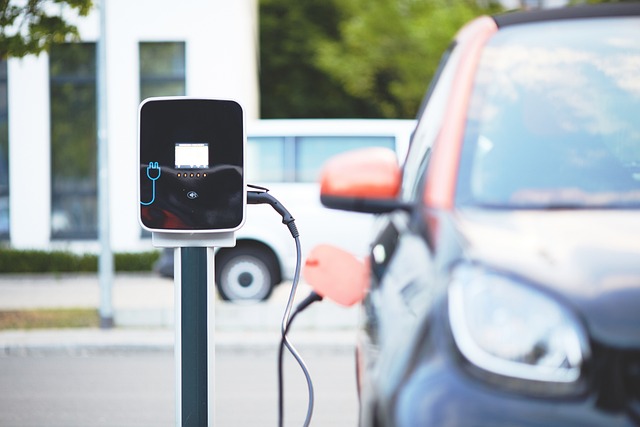Energy Management Strategies for Electric Fleets
Effective energy management is essential for electric vehicle fleets to balance operational requirements, charging infrastructure, and vehicle uptime. This article outlines practical strategies that integrate telemetry, analytics, and maintenance planning to optimize EV energy use across diverse mobility operations.

Managing energy across an electric fleet requires a systems-level approach that combines vehicle data, operational planning, and infrastructure coordination. Fleet managers must balance charging availability, route demands, and preventive maintenance to preserve battery health and ensure service continuity. Leveraging telemetry and telematics data alongside sensors and diagnostics enables better visibility into energy flows, while analytics and IoT connectivity support smarter decisions for charging and routing.
Telemetry and telematics for tracking
Telemetry and telematics provide real-time tracking of battery state of charge, energy consumption rates, and vehicle location. Combining GPS tracking with on-board telemetry allows dispatchers to match charging windows with vehicle schedules, reducing idle time and avoiding unnecessary fast-charging events that can stress batteries. Telematics platforms aggregate trip-level and vehicle-level metrics so energy use patterns can be identified and compared across the fleet.
Many fleets use telematics to create baseline consumption models for different vehicle types and duty cycles. These models feed into route planning and downtime forecasts, helping operations teams predict when vehicles will need to enter the charging cycle and which chargers should be prioritized to maintain service levels.
Sensors, diagnostics, and maintenance
Embedded sensors and diagnostics provide early warnings about battery temperature anomalies, cell imbalance, or ancillary system faults that affect energy efficiency. Proactive maintenance informed by diagnostic data reduces unexpected downtime and keeps vehicles operating within optimal energy windows.
A maintenance program that integrates remote diagnostics enables condition-based servicing rather than purely time-based schedules. This approach conserves resources and prevents energy losses due to degraded components like tires or drive systems, which can increase consumption if left unaddressed.
EV charging and routing strategies
Coordinating charging strategies with routing reduces peak load and avoids unnecessary detours. Managed charging prioritizes slow or scheduled charging when vehicles are idle, reserving DC fast charging for true operational needs. Intelligent routing that accounts for remaining charge, proximity to chargers, and traffic patterns keeps vehicles on task while minimizing energy waste.
Dynamic route adjustments based on real-time traffic, telematics-informed range estimates, and charger availability can extend vehicle utilization without compromising schedules. In dense urban operations, micro-depots or mobile chargers can reduce deadhead miles and improve overall energy efficiency.
Energy analytics and IoT integration
Analytics platforms transform telemetry, IoT sensor streams, and historical usage into actionable insights. Energy analytics can identify which routes, drivers, or vehicle models consume the most energy under given conditions, enabling targeted interventions. IoT integration allows remote optimization of charging schedules, demand response participation, and aggregated fleet-level load control.
Predictive analytics can forecast charging demand on a given day and adjust charging start times to exploit off-peak electricity rates or onsite solar generation. Over time, these measures support cost predictability and lower the environmental footprint of fleet operations.
Compliance and safety considerations
Electric fleets must also manage compliance with safety and regulatory requirements, from battery disposal regulations to hours-of-service rules that affect charging windows. Safety protocols around high-voltage systems, charging station operation, and incident diagnostics should be integrated into fleet workflows and telematics alerts.
Monitoring systems can flag noncompliant charging behavior or unsafe battery temperatures, and automated reporting supports regulatory audits. Training combined with sensor-driven alerts helps maintain safety standards while protecting energy assets.
Mobility and fleet-level optimization
A mobility-focused view of fleet energy considers vehicle assignment, shared mobility patterns, and total cost of operation. Optimizing vehicle deployment—matching EV range and payload capacity to route profiles—reduces unnecessary energy expenditure and improves uptime.
Fleet-level optimization ties together tracking data, maintenance schedules, charging infrastructure, and routing rules. Regular reviews of analytics outputs allow managers to refine allocation policies and scale infrastructure investments in line with actual energy usage and mobility demand.
Conclusion Energy management for electric fleets is an interdisciplinary effort that blends telemetry, telematics, sensors, diagnostics, and analytics with practical policies for charging, routing, maintenance, compliance, and safety. Integrating IoT-enabled visibility with data-driven decision making helps fleets maintain operational resilience while managing energy consumption and preserving battery health.





